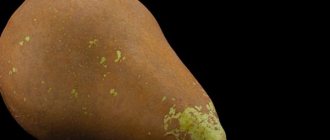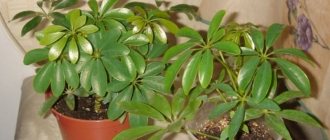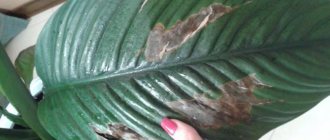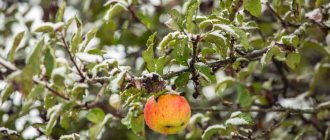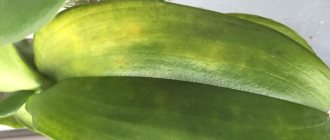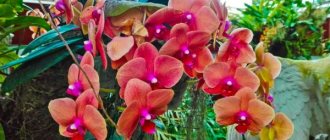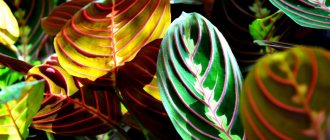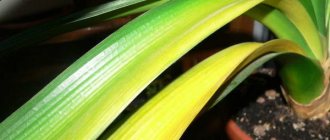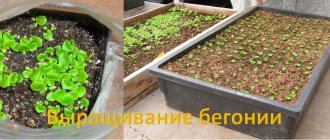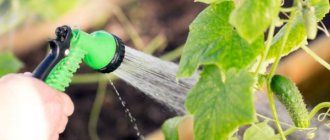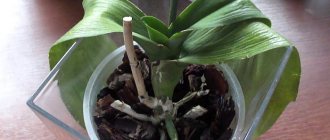Reasons why leaves turn black
The appearance of black spots or spots on leaves can indicate a number of problems. Most often they are connected:
- with improper care;
- with a lack of any microelements;
- pear diseases;
- presence of pests.
Black leaves on a pear: photo of the disease.
Unacceptable methods of treatment
In folk gardening, there are many options for treating phytodiseases, but not all of them are useful. Under no circumstances should you use dishwashing detergents or liquid soap to treat blackness on leaves. Also, delicate twigs and sinuses are easily damaged by solutions of vinegar and essence, which are often found in folk recipes for curing black cancer. You need to understand that if the sinuses are damaged, the process of flower formation becomes impossible, so this manipulation can eliminate the ovary process of the future harvest. Cancer, as an autoimmune disease, cannot be cured in the 21st century.
You cannot pour food waste under the pear, as many methods of expelling aphids recommend. Some leftovers may ferment or rot, spreading fungus under the pear. A sick pear should not be covered with mulch, as the root system faces difficult gas exchange. If the gate of infection is in the root and appendages, then when the greenhouse effect appears, the causative agent of the mob begins to actively divide and rise upward to the crown with a flow of juices.
Blackening of pear foliage can have many causes - bacterial, infectious, fungal, autoimmune diseases, insect damage and violations in the care and agricultural practices of fruit trees. In order to cure pear, you need to know the cause of the disease and select a medicine. If the blackness is caused by fungal infections, then neighboring trees need to be treated for preventive purposes, as they are potentially susceptible to mycotoxicosis. It is important to thin out the dense foliage of the pear and monitor the position of the root collar, which should not be immersed in the ground.
Improper care
The leaves turn black and curl when there is insufficient air humidity, and a large amount of dust accumulates on them. They are simply covered with plaque, a layer of dirt. But this problem is not as simple as it seems.
With a large layer of pollution, the photosynthesis process can stop and metabolic processes can be disrupted.
How to solve a problem
If, in the absence of precipitation, you spray a tree with water, the dust from the foliage will be washed away and the air humidity will increase. The condition of the tree will noticeably improve with this procedure.
Reasons for drying of a young pear
If branches dry on a pear planted several years ago, the reason may be hidden in pest damage to the root. Often moles make tunnels and damage young roots. The feeding stops, the leaves begin to wither and turn black. No less common problems that gardeners face:
- Sunburn often occurs when planted in an open area. When there is drought and lack of moisture, the tree saves moisture, the leaves wither and fall from the branches.
- In winter, the bark on the trunk was severely damaged by rodents, which accelerates the freezing of deep layers. Young pear seedlings require special protection, the creation of a fence made of boards.
- Black cancer. When the disease occurs, the trunk and large branches are destroyed. Long cracks appear on the bark, in which water accumulates after rain and harmful bacteria multiply. If left untreated, the tree may dry out within 2–3 years.
- Cytosporosis. In severe frosts or heat, the bark gets burned. It bursts, dies, and gradually the trunk becomes covered with brown ulcers. The fungus eats away the wood of skeletal branches.
- Scab. The disease affects shoots and spreads to leaves and fruits. The tree quickly becomes covered with dark spots resembling warts, and necrosis of the bark and wood begins.
A young pear can dry out if there is insufficient nutrition. If agricultural practices are violated or planted near large trees, the root systems become confused. Walnut and apple trees absorb moisture and nutrients, preventing the seedling from growing and bearing fruit.
Important!
When dry branches appear, gardeners begin to intensively water the soil, trying to saturate it with moisture as much as possible. If the reason is rising groundwater, flooding only aggravates the situation.
Lack of fertilizers
Untimely and unbalanced feeding can cause leaves to turn black and fall off. This is especially true when there is a lack of two important elements: boron and calcium.
- With a lack of calcium, dark yellow spots appear on the leaves. Over time, they turn black, dry out and crumble.
- Pear leaves turn black, curl, and the tips dry out due to a lack of boron.
How to solve a problem
Partial blackening of leaves and fruits.
This problem of blackening of pear leaves can be corrected by adding calcium nitrate or another complex fertilizer that contains calcium.
If there is a lack of boron, spraying with a solution of boric acid will help. This will quickly and effectively solve the issue of shortage of this element.
Agrotechnical measures
When the leaves of pear trees begin to curl into a tube, this is additionally accompanied by various “complications.” Spots of various shades, plaque appear, shoots die and other troubles occur. The presence of certain side effects allows you to determine what exactly the pear fruit crop needs.
It is worth carefully monitoring the composition of the soil in the tree trunks and the condition of the fruit trees themselves. Based on observations, necessary adjustments are made. Applying appropriate fertilizers in the right quantities helps to increase the immunity of the garden crop, which will make it resistant to many diseases.
Nitrogen deficiency
It is replenished by adding ammonium nitrate to the soil. First, 20 g of the substance must be dissolved in water (about 10 liters - 1 bucket). Then the solution is poured under the root. Recommended hours for the procedure are evening time. At this moment, less moisture evaporates. A weak solution of urea can replace saltpeter, only it needs to be used to treat the foliage.
Insufficient phosphorus
When the pear foliage begins to turn red, this is direct evidence indicating the intake of a small amount of phosphorus. The problem is solved with the help of a small amount of Superphosphate with the inclusion of organic fertilizer added to the soil around the tree trunks.
Reddening of pear leaves is a characteristic sign of phosphorus deficiency.
To prepare the mixture, you need to take 10 kg of manure and mix it with 15 g of the above-mentioned substance.
Low potassium
The amount of this element is adjusted by loosening each trunk circle around the pear tree. Next, the land is fertilized by adding wood ash or potassium sulfate.
Calcium replenishment
The lack of this element is noticeable in the leaves - they begin to curl from the top. In this case, the trees are fed with lime. You will need 100 g of the substance, but before applying it, the soil around each tree needs to be loosened and watered with 2-3 buckets of water.
Important! If the soil has a high level of acidity, then applying fertilizers based on Superphosphate is not recommended. If necessary, phosphate rock is used instead.
After a few days (from 2 to 4), the soil is enriched with the addition of potassium sulfate and mulched with humus.
Development of diseases
The leaves on the pear turn black when affected by a number of diseases. This:
- bacterial burn;
- scab;
- sooty fungus.
But fruits, branches and, in some cases, the trunk also suffer. It is by these general signs that one can determine that the cause of blackening is precisely the disease.
Bacterial burn
When bacterial burn occurs, leaves, especially young ones, are affected. They turn black in entire rosettes, and the affected areas of the branches also turn black. Through cracks in the bark, the disease penetrates the trunk; if the tree is not treated in a timely manner, it can quickly die.
The affected branches are cut off and burned, and the pear is treated with an antibiotic solution. The affected areas are also treated with a solution of copper sulfate and lime. After trimming the affected areas of the plant, the tool must be sterilized.
Scab
Scab spores overwinter on affected branches and fallen leaves. With high humidity they spread quickly. The leaves become covered with black spots, eventually turn completely black and fall off. Scab also affects branches and fruits.
Timely treatment will help protect the crop from the disease. Spray the tree with fungicides 2 times per season. There are a number of effective folk remedies that act in the early stages. Along with treatment, foliar fertilizing with potassium fertilizers is applied.
Damage to pear leaves.
Sooty fungus
As a result of this disease, a black coating appears on the leaves and fruits, and the taste and appearance of the pears deteriorate. The black coating is easily erased from the surface of the leaves. The fungus develops on the sugary secretions of sucking pests that infect the tree.
Fungicides are used to get rid of sooty fungus. The tree is also treated against pests that can cause fungus.
What to do if the leaves on the pear turn black
The easiest way to deal with the problem is if black spots on pear leaves appear due to a lack of certain nutrients.
For example, calcium nitrate or other complex calcium-containing fertilizer can easily prevent calcium deficiency.
Attention! Spraying pear trees with boric acid can help with boron starvation.
And in order to increase air humidity, it is enough just to regularly spray the trees with ordinary water until the problem ceases to be relevant.
The most difficult thing to deal with is a bacterial burn. In general, no official effective treatment for bacterial burns has yet been invented. But you can try to save the tree using conventional antibiotics.
First, using pruning shears and a container of medical alcohol, you need to trim every branch on which even the slightest damage is found. After each pruning, the pruning shears must be disinfected in an alcohol solution. All cut pear branches are placed in a metal basin and burned as soon as possible. All sections are also disinfected by wiping them with a rag soaked in alcohol.
Then you need to find one of the following antibiotics:
- Ofloxacin;
- Penicillin;
- Agrimycin;
- Thiomycin.
The drug is diluted in a small amount of boiled water and thoroughly sprayed on every twig and every leaf on all sides. The first treatment is carried out in the budding phase - the beginning of flowering of the pear. Then the operation is repeated at least three times, every five days.
If the procedures done do not help, you will have to part with the pear by cutting it down at the root. The root must also be burned, and the place where the tree grew should be treated with strong bactericidal preparations.
It can also be difficult to cope with a situation when the trunk of a young pear tree has turned black. It is necessary to realize that black cancer most often occurs as a consequence of frost damage received after winter, when an infection gets into the weakened wood. But if the disease was caught in the initial stage, then you can try to cope with it.
Treatment of black cancer on a pear must begin with careful cutting and even scraping of all affected parts of the wood down to healthy tissue. All wounds must be treated with a solution of copper sulfate and covered with oil paint.
The following components can also be effective for washing the remaining parts of the tree:
- pharmaceutical greens;
- copper-containing preparations;
- solution of clay and mullein in equal parts;
- strong solution of potassium permanganate;
- a saturated solution of table salt with a few drops of iodine;
- diluted alcohol or vodka;
- "Vitaros";
- "Cresoxim-methyl."
Agrotechnical measures
To cope with the many reasons that cause the appearance of black leaves on a pear, sometimes it is enough to carry out a set of agronomic and mechanical measures in a timely manner. These include the following:
- In early spring, immediately after the snow melts, the ground under the pear tree is cleared of all plant debris.
- Then they dig up the soil in a circle encircling the crown of the tree, while simultaneously introducing organic or mineral fertilizers into it.
- Before the buds open, treat the pear with hot water at a temperature of + 60 °C.
- During the period when buds appear, they are sprayed with the Agat biofungicide.
- After the pear blossoms, potassium-phosphorus fertilizer is applied.
- After 18-20 days, repeat treatment with the biofungicide.
- In mid-summer, feed the pear for the last time, using ash and humus.
- In the autumn, in order to prepare for winter, they do sanitary pruning of the tree, remove and burn all plant debris.
- The kidneys are treated with a 5% urea solution. And to disinfect the soil around the tree, use a solution with a 7% concentration.
- The trunk and main skeletal branches are coated with a solution of lime with the addition of copper sulfate.
Biological agents
Recently, quite effective biological agents have appeared, consisting of beneficial bacteria, which can quite successfully fight some diseases. Even with a bacterial burn on pears in the early stages of the disease, you can try to cope with the help of biological products.
For this you can use Fitolavin and Gamair. The first drug has a really strong effect and can be used at the beginning of the growing season, before the fruits ripen. 20 ml of Fitolavin are diluted in 10 liters of water and the resulting solution is watered and sprayed on the tree.
It is advisable to use Gamair during the period of fruit ripening, since it is completely safe for human health. 2 Gamaira tablets are diluted in 1 liter of water and sprayed on pear branches.
Biological products will also be effective against sooty fungus. After all, the microorganisms used in them eat sugar from insect secretions, thereby leaving the fungus without food. You can use Siyanie, VostokEM1 and Baikal.
Chemicals
All fungal diseases, as a result of which the leaves and branches of the pear turn black, must be treated at the first signs detected with copper-containing preparations: Bordeaux mixture, copper sulfate and others. Spraying with these products is especially effective in the spring and autumn. After bud break, it is better to use fungicides - Fitosporin, Folicur, Topsin.
You can also use solutions prepared according to the following recipes:
- 300 g of copper sulfate + 350 g of lime + 10 liters of water (before buds open);
- 100 g of copper sulfate + 100 g of lime + 10 l of water (after bud break);
- 30 g of azophos + 2 ml of SCOR (fungicide) + 6 g of Bayleton + 40 g of copper chloride + 10 l of water.
And against insect pests it is necessary to use insecticides such as Fitoverm, Alatar, Biotlin and Fufanon. All damaged leaves and fruits must be removed from the pear and burned.
Attention! And if the moment was missed, and the number of insects exceeded all possible limits, then it is worth using a trichlorometaphos solution for treatment.
Traditional methods
As for insect pests, the easiest method of getting rid of them is to wash them off the trees using good water pressure.
For spraying, you can also use a solution of regular dishwashing detergent in water. The procedure is repeated every other day for two weeks.
You can also dilute 400 ml of 70% alcohol and 1 tbsp in 1 liter of water. l. liquid soap and spray the trees in the morning before the sun rises.
Infusions of all kinds of herbs are also good against insects: garlic, tansy, onion peel, yarrow and tobacco. To obtain an infusion, 400 g of any herb is poured into 3 liters of water and infused for about 3-4 days. Add a few handfuls of wood ash. Filter, bring to a volume of 10 liters and spray the trees.
Pear damage by pests
Pests on pear leaves.
Some pests that feed on tree sap and tissue can cause foliage to turn black, dry out and die. This
- slowpoke;
- leaf roller;
- aphid.
Medyanitsa
Insects of this species are red, spotted and yellow. Adults overwinter on pear trees and in spring lay eggs in the bark and on swelling buds. Black dots appear on the leaves at the sites of the copperhead bite; as a result of their vital activity, sugary secretions appear, on which sooty fungus develops.
The first spring treatment destroys adult individuals; when sprayed before and after flowering, the larvae are destroyed. Insecticides are used for treatment.
leaf roller
The leaf roller causes great harm to the tree. It is yellow in color with a white waxy coating. It overwinters in fallen leaves. Over the summer, the pest can lay up to 500 eggs; curled leaves entwined with cobwebs are colonies of leaf roller larvae. And if you don’t fight it, then in a short time it can destroy not only leaves, but also shoots and fruits.
Treatments in the spring, before buds open and before flowering, will help. Insecticides are used to control leaf rollers.
Aphid
Aphids settle in entire colonies and are very prolific. It sucks the juice from the leaves and leaves a sugary secretion that contains fungal spores. An adult female is able to fly to other trees and reproduce there.
To treat pears against aphids, you can use chemicals and folk remedies. Experts also advise paying attention to the horde of ants; they are allies and carriers of aphids.
Errors in treating fruit trees
To begin treatment of any fruit tree, you need to establish the correct “diagnosis”, and this is difficult without special knowledge, therefore agricultural cultivation technology should include familiarization with the signs of infections and crop pests.
Possible mistakes:
- treatment does not have an effect - incorrect diagnosis and choice of remedies;
- spraying is carried out when it is dry, there is no wind - treatment in inclement or windy weather will not give results;
- the time for using a particular drug was missed (the instructions indicate during what period it is recommended to use);
- many products cannot be used during fruit ripening, flowering, or ovary formation, so you need to carefully read the instructions;
- an overdose of drugs harms not only the plant, but also the soil;
- If you do not take into account that you need to treat the infection and carry out pest control at the same time, then the treatment will not give the desired effect.
, the quantity and quality of the harvest will depend on whether it is treated on time and how To avoid the spread of infection and pests in the garden, you need to carry out preventive measures in spring and autumn.
Prevention measures
Carrying out agrotechnical care measures will help increase the plant’s immunity to diseases and prevent blackening of the leaves.
Before planting a pear, it is important to find out what diseases and pests affect the crop in a given area, and choose a variety that is resistant to diseases. The following activities should also be performed:
- spring preventative treatments;
- timely feeding;
- regular watering;
- annual sanitary pruning of the tree with a sterile instrument;
- preparing the tree for the winter cold.
Causes of pear drying
In most cases, the problem occurs due to a combination of several reasons. Among the factors that provoke drying of the pear:
- Incorrect care. Some varieties are sensitive to weather changes, react to a lack of nutrients in the soil, and need high humidity.
- Error when choosing a landing site. You need to make sure that the roots are not in waterlogged or heavy loamy soil. This prevents the seedlings from developing and bearing fruit.
- Worsening weather conditions. During dry summers, it is important to increase watering and apply fertilizing to stimulate growth. During the rainy season, gardeners have to think through drainage systems to remove excess moisture.
- Pests, diseases affecting the core.
Under favorable conditions, a pear tree can bear fruit in regions with a temperate climate and produces a bountiful harvest in the southern regions. Before purchasing a seedling, you must carefully study the characteristics of the variety and its zoning.
Why does the top of a pear dry out?
Dry top is a problem associated with drying of branches and leaves in the upper part of the fruit tree. More often the phenomenon occurs in the spring after the pear awakens. At the same time, the number of ovaries decreases, the fruits do not ripen, and the harvest is small and without a pronounced taste.
The main reason for dryness is damage to the root system. When planting, it is necessary to exclude the presence of groundwater and the proximity of drainage holes. Excess moisture provokes rotting and death of the tree. Less common factors are damage to the trunk by pests (corrosive woodworm, codling moth).
Important!
It is necessary to inspect all fruit trees on the site once every 1–2 weeks. Regular application of pesticides helps reduce the likelihood of infection and prevents crop loss.
Reasons for drying out branches
If a gardener notices increased dryness of side shoots and branches, you need to make sure there is no bacterial burn. A dangerous disease is associated with the activity of pathogenic pathogens: E. amylovora, Cytospora leucostoma, C.cincta. Characteristic features:
- The young tips dry out, the shoots are bent with a crochet hook;
- flower stalks become mummified;
- the leaves turn black.
If the drying shoots are broken, a milky white exudate is released. When exposed to sunlight, it turns brown. Dangerous spores and bacteria are carried by pollinators, so dryness intensifies in the summer and spreads to apple trees, peaches, and cherries in the garden.
Why does the top dry out?
Dry top is usually observed in the spring, but can occur in July-August. The problem occurs every year. Young trees may wither after three years; mature trees reduce the amount of yield. The reasons that cause the upper part to dry out are the following:
- Problems of agricultural technology. This is especially true for the process of disembarkation and departure. Typically, the drying out of the top is associated with the close flow of groundwater. The roots of a young tree touch water, rot and die. The top dries out. If a young seedling of a fruit and berry tree is planted according to the rules, then the top will dry out first. This is how they identify the cause, which is not related to planting.
- Problems of agrochemistry - nutrition, diseases, parasites. In August, the ends of new branches of a young tree dry out. If you look closely at the shoots, you can see areas of woody penetration - the causes of drying. If the tips of the branches dry out, it means that they are being destroyed by the eastern codling moth.
You need to cut out the part of the top that has dried out. Thus, the balance between the rhizome and the crown part will be restored. If groundwater is close to the ground, you will have to transplant the seedling higher or make high-quality drainage.
Methods to combat dryness
When the tops dry out, gardeners recommend cutting off the dying parts and identifying problems with agricultural technology. If the soil becomes waterlogged, it is necessary to transplant the pear seedlings to a drier place and place a layer of drainage made of stones, broken bricks, and expanded clay at the bottom of the hole.
When growing an orchard, drainage ditches can be made between the rows. They collect excess water and drain it away from the roots. Additionally, soil deoxidation is carried out using dolomite flour: it is added to the ground in the spring before the plants awaken, after the snow melts.
Often, dry tops are associated with an excess of boron, nitrogen, and a lack of calcium and phosphorus compounds. Fertilizing should be carried out at regular intervals, adding ready-made compounds, organic matter, and adding diluted mullein.
